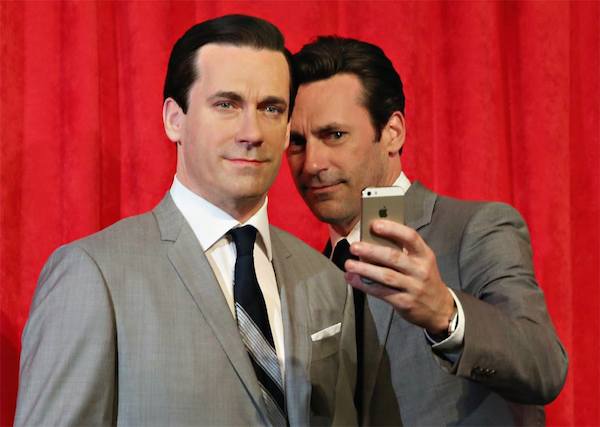
Photo: Courtesy Madame Tussauds, New York.
The Trend Piece: While many museums are struggling, whether from fundraising shortfalls or municipal bankruptcy filings, one institution is thriving: Madame Tussauds. Since Merlin Entertainment’s 2007 takeover of the historic wax statue museum with a Gagosian-like global network of locations, Tussauds’ has allowed visitors to get selfie-close with celebrity statues, solicited suggestions for new likenesses, and seen consequent spikes in attendance, Kate Taylor writes in the Globe and Mail. “In a culture that often mistakes celebrity for artistic talent or moral worth, fame is a kind of magic fairy dust,” Taylor writes. “Offered an up-close opportunity that few of us have with actual movie stars, politicians, professional athletes and rock idols, visitors cuddle up to the waxworks as though some of that dust might rub off on them.”
A LOVE sign in New Orleans.
Photo: @taniadall, via Twitter.
The Scofflaw: Since the spring, all over New Orleans, a pair of anonymous street artists have been posting simple, mass-produced signs that simply read LOVE in faux-stenciled letters—even installing a couple near the site of a recent shooting in the heart of the French Quarter. And now one of the secretive public artists has written to the Times-Picayune to explain the impetus for the widely loved, if technically illegal, project. “The signs are meant to be felt, not rationally dissected,” the artist explains. “If it helps slow down just one person with a gun, gets somebody just to be a little more tolerant and patient, is it so awful and horrible to understand?”
Will Klaus Biesenbach, one of the art world’s great selfie masters, embrace Apple’s new time-lapse technology?
Photo: Klaus Biesenbach, via Instagram.
The Prediction: Is the era of the selfie at an end? Seems improbable, but Pacific Standard’s Casey N. Cep boldly suggests that Apple’s imminent introduction of an in-camera time-lapse function for its smartphones will make a genre of image from photography’s earliest days the new most-shareable type of photo. “An agent of nostalgia, time-lapse lets you move quickly between the past and the present, or if you go backward, between the future and the past,” Cep writes. “Merge time-lapses and you’ll be able to watch your block or street change over a few weeks or a shoreline erode across years. Two of our greatest cultural fears, gentrification and climate change, will be instantly visible in time-lapse in ways that even sequences of photographs, those juxtapositions of before and after, couldn’t accomplish.”
The Hindsight: The current situation at the Corcoran Gallery of Art and College of Art and Design in Washington, DC—whereby the museum portion is set to be taken over by the National Gallery, while George Washington University is slated to administer the art school, pending the outcome of a last-minute legal battle—was anticipated with startling lucidity some 69 years ago in a Corcoran memo recently unearthed by the Washington Post. In it, the administration of the museum and school frets over the recently opened National Gallery’s intentions to cover much of the same material. “If, and when, this policy is carried into effect,” the April 20, 1945, memo reads, “there is no doubt but that our new National Gallery of Art will finally encroach upon the traditional field heretofore filled by this institution, and the case which now arises is as to whether or not it would be possible to reach any kind of understanding by which this unfortunate situation might be avoided.”
Abu Dhabi from space at night.
Photo: Courtesy of the Earth Science and Remote Sensing Unit, NASA Johnson Space Center.
The Eye Candy: What does your city look like from space? There’s a single-function website for that, called Cities at Night, the Atlantic points out. “Cities at Night collects images that astronauts have taken of Earth at night,” explains Robinson Meyer. “It organizes them on a map, and draws them from a much larger resource: the Gateway to Astronaut Photography of Earth, a NASA-organized database of all photos taken by astronauts in space.” That, above, is Abu Dhabi; can you make out the site of the new Louvre outpost?
The Extracurricular: The scientific community is at war over dueling brain-mapping projects. In the last year, not one but two multi-million-dollar projects have been launched—the European Union’s €1 billion Human Brain Project (HBP) and the USA’s $100 million Brain Research through Advancing Innovative Neurotechnologies (BRAIN) program (sinisterly, $40 million of the money is from the Department of Defense)—to map the human brain, but the scientific community is not entirely on board with the projects. As Slate reports, some 500 scientists have signed a petition faulting the HBP and BRAIN for being too vague, and calling for the enormous sums earmarked for each project to be invested in a broad range of neurological research instead.